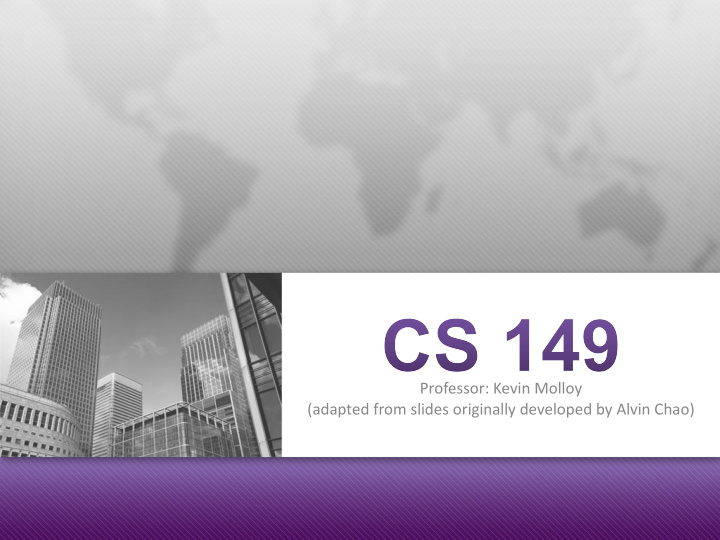



Professor: Kevin Molloy (adapted from slides originally developed by Alvin Chao)
•Counting on a Line: •x+a moves you a units to the right of x •x−b moves you b units to the left of x •Counting on a Circle •(x+a) moves you a units clockwise of x •(x−b) moves you b units counterclockwise of x
• Background: – A 24-hour clock (00 - 23) • It is now 17. What time will it be in 12 hours? • The Naive Approach: – 17+12 is 29. So, we have advanced a day. That means the time is actually 29-24 or 5. • A Shortcoming of this Approach: – We might advance more than one day! (For example, advancing 93 hours from now.)
• A Better Way – Use arithmetic on a circle(that goes from 0 to 23) • Using int variables and % (modulo operator) – future = (current + change) % 24;
• Minutes – Go from 0 to 59 – Be mindful if you also need to count hours(which can be calculated using integer division). • Days of the Week ( 0 to 6) • Months of the Year ( 0 to 11 not 1 to 12) • Weights: Ounces (0 – 15) then use pounds – Pounds ( 0 – 1999) then use tons • Distances: – Inches (0 – 11) then use feet – Feet( 0 – 2 ) then use yards – Yards ( 0 – 5279) then use miles
“Twenty-nine days” means the same thing as “Four weeks and one day”. If days is a Java integer variable containing some number of days, develop expressions for: • The number of weeks in days (4 in the example above). • The number of days that are left over. (1 in the example above).
• Definition – A number is even if it can be divided by 2 with no remainder • Observe – If we think of all numbers as being either even or odd we can conceptualize this as a circle with two items in the cycle. – We can use the % operator to do this. • Does x % 2 equal 0?
• Examples – Turn-taking by different # of players – Cycling through a set of colors – Repeating a set of instructions • Observation – An element in a set can be identified by its number – If we start at 0 and let n be the cardinality in the set then we can use index =(index + 1) % n
• Background: The U.S. Census Bureau conducts a census every 10 years(in years ending with a zero) • Problem: Find the previous census year for a given year • Using / : – censusYear = (year / 10) * 10;
• Note an int value is ‘atomic’ meaning it has no sub-parts. • Many times we want to find the ones digit or tens digit of a number. • Get the left-most digits – Use integer division (i.e. / ) – Use a right-side operand of 10 N-n • Get the right-most digits – Use remainder after division (i.e. %) – Use a rightside operand of 10 n
• Retrieving the Left-Most n Digits: – The left-most digit of 7198 is 7198 / 1000 – The left-most two digits of 531768 are 531768 / 10000 • Retrieving the Right-Most n Digits: – The right-most digit of 7198 is 7198 % 10 – The right-most two digits of 531768 are 531768 % 100
• An operator is a symbol indicating that an operation is to be performed on one or more operands • An operand can be a variable, literal, or expression • Number of Operands: – A unary operator has one operand – A binary operator has two operands – A ternary operator has three operands
• Numeric Operations and Operators: – Addition (+) – Subtraction (-) – Multiplication (*) – Division (/) – Integer Division (/) – Modulo (%) • Operands – Best practices would say these should be the same type but Java sometimes varies these types
• Operations and Operators: – "Positive" (+) – Negative (-) – Increment (++) – Decrement (--) • Operand: – A numeric type
• Acknowledgements Parts of this activity are based on materials developed by David Bernstein </end>
Recommend
More recommend